Decorating a pergola with plants is a great way to liven up your outdoor living space. Adding lush greenery can transform an outdoor area from average to extraordinary. Plants bring so much life and beauty to any space; a pergola is no exception.
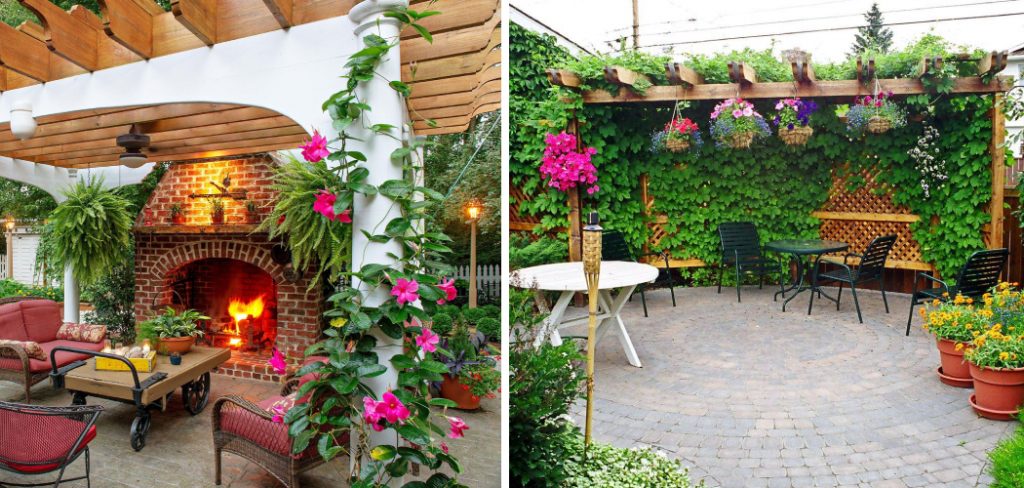
Decorating a pergola with plants can bring your outdoor space to life, adding color and texture. It’s also incredibly versatile: you can use larger plants or shrubs to provide shade on hot summer days, trailing vines and climbing plants for an enchanted garden feel, or even hang planters to give the illusion of bringing the indoors out. You can find step-by-step instructions on how to decorate a pergola with plants in this blog article.
Tools You Will Need
- Shears or pruning shears
- Ladder
- Hose with adjustable spray nozzle
- Plant carrier
- Fertilizer
- Potting soil and containers for the plants you have chosen
- Staples, tacks, nails, hooks, and screws
- Garden twine or plastic ties
- A hammer or cordless drill
- Outdoor sealant or weatherproofing for wood
Step-by-step Instructions for How to Decorate a Pergola With Plants
Step 1: Inspect your Pergola for Damage
Take a look at your pergola and take note of any weak points or damage. Take the time to make any repairs before you start decorating. Measure the size of your Pergola area, considering the type, shape, and depth of your pergola. This will help you decide on the best plants for your pergola and how much you need each.
Step 2: Select the Right Plants
Choose plants that will withstand the climate in your area and those that can handle the specific conditions of Pergola environments. Some excellent choices include bougainvillea, ivy, jasmine, and clematis. All these plants can thrive in a pergola with the right support and care.
Step 3: Add Plant Containers
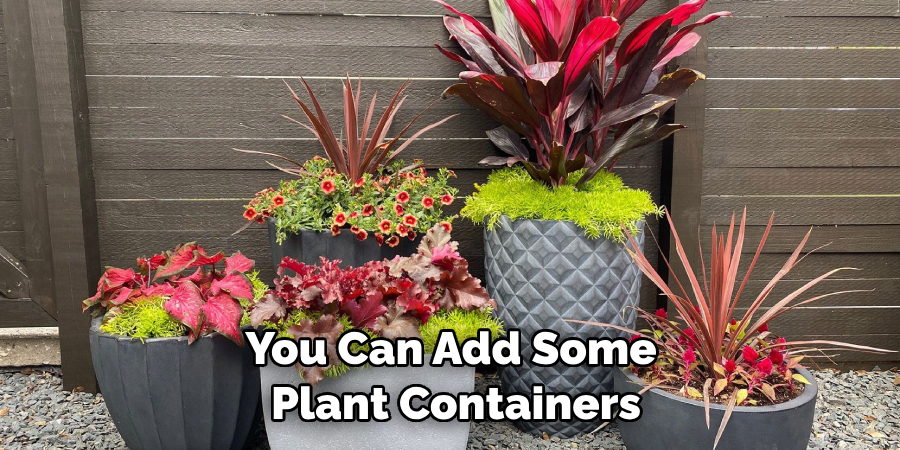
You can add some plant containers or hanging baskets to your pergola for extra color and texture. If you do this, ensure they are securely attached using heavy-duty hooks and brackets. If you want your plants to thrive, you must provide them with the support they need. Installing trellises or wires can help keep your pergola greenery in place. Ensure you use high-quality materials that won’t rust or rot over time.
Step 4: Plant Your Pergola
Start by planting your larger plants first, then fill in with smaller plants like annuals or succulents. Make sure to leave a few inches between each plant for air circulation. You should also use the highest quality soil to ensure your plants get off to a healthy start.
Step 5: Add Mulch
Adding a layer of mulch can help protect your plants’ root systems and keep them healthy. It also helps provide your pergola with extra insulation from extreme weather conditions. Water your plants regularly and deeply to encourage strong root growth and health. Look for signs of over or under-watering, such as wilting leaves or dry soil.
Step 6: Prune and Trim
Prune your plants regularly to encourage new growth and keep them healthy. This will also help maintain the shape of your pergola’s plants and ensure they are not becoming too wild or unwieldy. Accessorize your pergola with some hanging lanterns or planters to complete the look. These can create a cozy and inviting atmosphere for you and your guests.
With these steps in mind, you’ll be well on your way to creating an outdoor space that is beautiful, welcoming, and full of life. Decorating your pergola with plants is a great way to add style and personality to your outdoor living space.
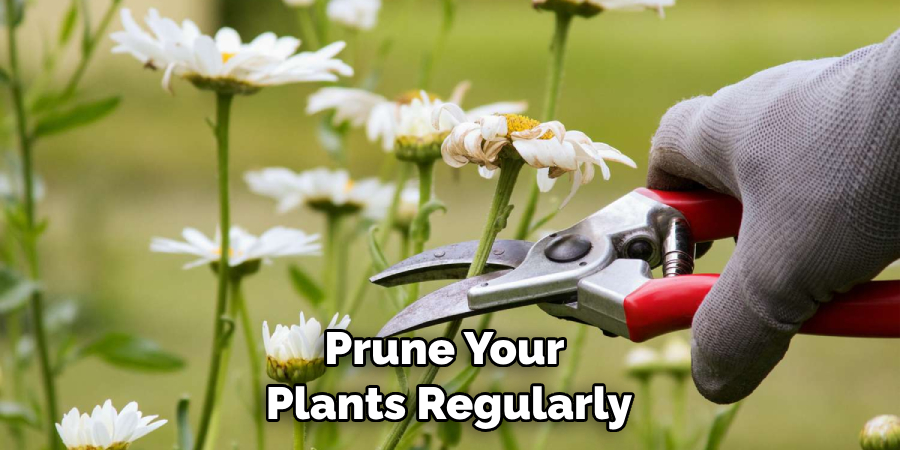
Precautions for How to Decorate a Pergola With Plants
- Wear sturdy gloves when handling plants to avoid injury.
- Make sure your pergola is secure and strong enough for the weight of the plants you are adding.
- Using hanging plants, use metal hooks secured into the pergola frame or wall for extra support.
- Place tall climbing vines away from the main walkways to avoid tripping.
- Avoid adding too many plants, which could create an overcrowded look and damage the pergola frame.
- Use a ladder or stepladder when reaching for high-up plants, and have someone help you hold it if possible.
- Keep in mind any potential diseases that the plant may carry or create. Research how to prevent and treat any common diseases before adding any plants.
Decorating your pergola with plants is an easy way to add color, texture, and life to your outdoor living space. With a few simple steps and precautions, you can create a beautiful outdoor oasis that will be enjoyed for years.
What Types of Plants Are Suitable for Decorating a Pergola?
When considering which plants to use for decorating a pergola, several important factors must be remembered. The climate of your area, the amount of sun and shade that will be available, as well as personal preferences, should all be taken into account when selecting your plants.
For areas with mild climates, deciduous vines are great options for adding a lush canopy to your pergola. Examples of deciduous vines include wisteria, grapevine, and clematis. These varieties can be trained over the structure and will provide color throughout the growing season and bring texture and interest in winter when they are dormant.
Types of Maintenance After Planting a Pergola
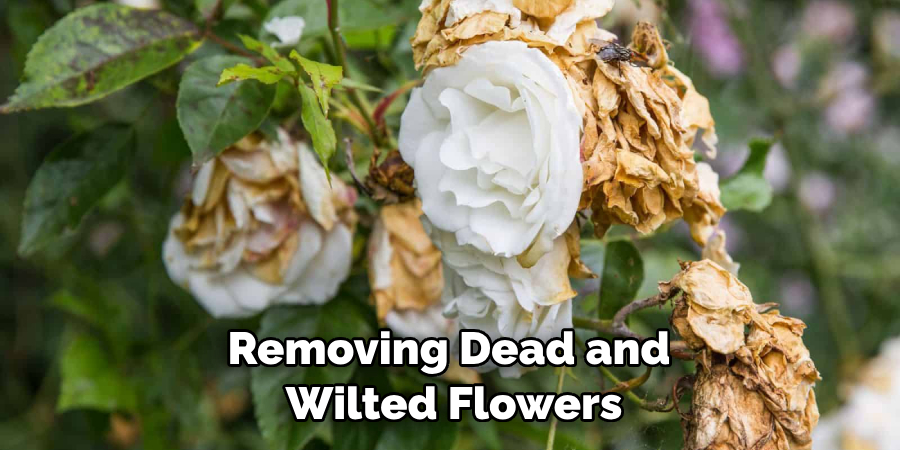
- Deadheading: Removing dead and wilted flowers will keep your pergola looking neat.
- Pruning: Regular pruning of plants is necessary to maintain their shape and size and promote healthy growth.
- Planting Winter Bulbs: Bulbs planted in the autumn can bloom in late winter or early spring around the pergola, adding a beautiful touch of color to the area.
- Support Structures: If you’re planting vining plants on your pergola, provide adequate support as they grow. This can be done by adding trellises, poles, or other structures.
- Fertilizing: When needed, fertilize plants to ensure optimal health and growth.
These are just a few considerations that must be considered when selecting plants for a pergola. It’s important to research the types of plants you want before planting, as specific species may require different levels of care or have different needs than other types.
Benefits of Decorating a Pergola With Plants
Adding plants to your pergola is an excellent way to make it inviting and aesthetically pleasing. Here are seven reasons why decorating a pergola with plants might be the right choice for you:
- Adds Interest: Adding some lush greenery is a great way to add interest and color to any outdoor space. Vines, climbers, and hanging plants can help to bring the pergola alive with plenty of color and texture.
- Increases Privacy: If you seek an extra sense of privacy in your outdoor space, adding strategically placed climbing vines or shrubs around the perimeter of your pergola can be a great way to enhance this.
- Reduces Stress and Anxiety: Studies have shown that plants in outdoor spaces can help reduce stress and anxiety levels. Adding some greenery to your pergola is an excellent way to achieve this calming effect.
- Attracts Wildlife: By introducing plants into your pergola, you will attract a variety of birds, butterflies, and other wildlife. This can be a great way to get unique views and experiences in your outdoor space.
- Enhances Curb Appeal: If you want to improve the look of your outdoor space, adding plants can be an excellent option for boosting the curb appeal of your property.
- Adds Contrast: Plants offer many different shapes and colors that can help to create a beautiful contrast against the other elements of your outdoor space. This can be especially true when choosing the right type of plants for your pergola.
- Climate Control: Last but not least, greenery can help keep temperatures cooler during the summer and warmer in the winter months. This can make a great addition for anyone looking to enjoy their outdoor space all year round.
Whether you want to add some interest, reduce stress, or enhance the look of your property, decorating your pergola with plants can be an excellent choice.
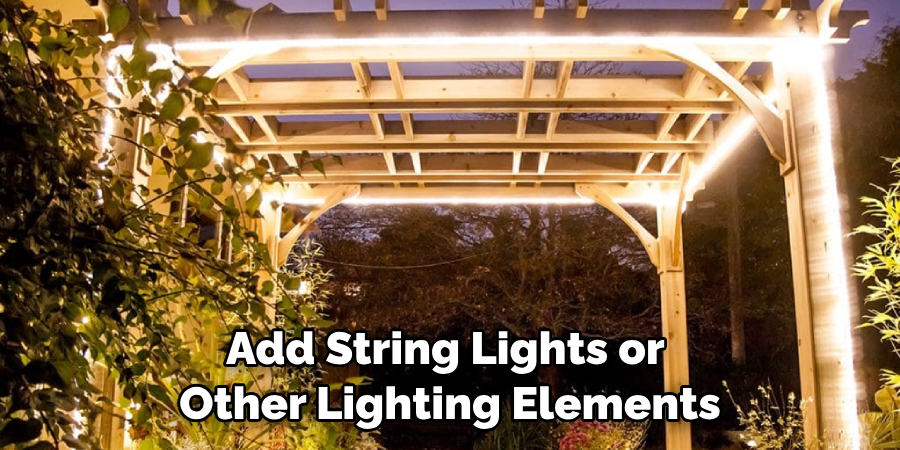
How Can You Ensure Your Pergola Design is Long-lasting?
When planning to decorate your pergola with plants, it’s important to consider the climate and environment in which the plants will be grown. You’ll want to choose plants that are resilient and capable of thriving in a range of weather conditions.
To ensure your design is long-lasting, you should also look for plants that require minimal maintenance, such as low-maintenance shrubs and plants that don’t need much care. Additionally, you can look for easy-to-maintain options such as small hedges, grasses, or succulents.
When it comes to the overall design of your pergola, there are several ways to add visual interest and create an inviting atmosphere. You can use planters and hanging baskets to add color and texture or hang wind chimes or other decorations.
Add string lights or other lighting elements to the pergola to create a cozy atmosphere. Finally, consider adding some comfortable furniture such as chairs, couches, or benches so that your outdoor space is inviting for entertaining guests and spending time outdoors.
Conclusion
In conclusion, decorating a pergola with plants is easy and fun! With a little planning, you can create an outdoor space that’s inviting, beautiful, and full of life. From ivy crawling up the sides to colorful flowers on top, there are no rules for designing your lovely oasis.
Take advantage of this unique way to spruce up your outdoor space and bring the beauty of nature right to your home. I hope this article has been beneficial for learning how to decorate a pergola with plants. Make Sure the preventive measures are followed chronologically.

